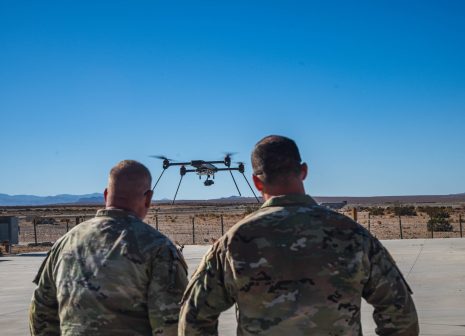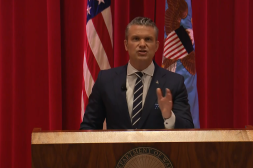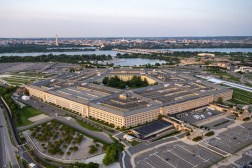Feinberg releases new guidance for DOD’s civilian workforce shakeup

Deputy Secretary of Defense Stephen Feinberg issued guidance this week to advance the Pentagon’s plans to restructure, consolidate and reduce its sprawling civilian workforce.
The effort is part of the new Workforce Acceleration and Recapitalization Initiative that Secretary of Defense Pete Hegseth launched in late March.
In two memorandums, obtained and authenticated by DefenseScoop Tuesday, Feinberg directs Defense Department leadership to carry out an incentive program and comprehensive organizational review that Hegseth ordered as part of a broader, disruptive campaign to promote efficiency by reorganizing the department’s workforce and investments.
“I will lead the DOD effort to rebalance and optimize its civilian workforce to urgently rebuild our military, revive the warrior ethos, and deliver maximum deterrence,” Feinberg wrote in the new directive on the organizational review and potential restructuring.
The guidance was sent to Pentagon leadership, combatant commanders, and defense agency and DOD field activity directors.
He confirmed that the “proposed future-state organizational charts” that Hegseth previously requested, which are set to be delivered to Feinberg by April 11, mark an early step in achieving the overarching aims.
Those proposals for the preliminary review “should communicate potential opportunities to reduce or eliminate redundant or non-essential functions and include adjusted civilian manpower levels that reflect these projected changes,” Feinberg wrote.
The Pentagon’s No. 2 told DOD component leaders to conduct a more detailed assessment based on additional guidance attached to the memo and to provide updated proposals to the undersecretary of defense for personnel and readiness by May 24. Those suggestions will inform the department’s fuller, comprehensive review and other organizational modifications in fiscal years 2025 and 2026.
“Every civilian role should directly enable lethality, readiness, or strategic deterrence. If not, it should be reclassified, outsourced, or removed,” Feinberg wrote in the attached guidance.
“Every role must now meet a simple test: If this position didn’t exist today, and we were at war tomorrow, would we create it? If the answer is no, it should be consolidated, restructured, or eliminated,” he added.
In the process, DOD will aim to consolidate duplicative functions, overlapping offices, and parallel authorities while also eliminating any identified excessive layers of supervision and middle management.
Further, Feinberg said “Digital-First Operations” associated with technology innovation will be prioritized in this new initiative.
“We should modernize or eliminate manual workflows, paper-based processes, and outdated IT platforms and leverage automation and artificial intelligence to power the mission impact of our civilian workforce,” he wrote.
Pentagon Spokesman Eric Pahon told DefenseScoop in a statement over email that this memo sets off “one of the most ambitious efforts in decades to modernize how the department is organized and operates.”
“This is about more than efficiency — it’s about designing a workforce and structure that moves at the speed of today’s challenges,” Pahon said.
In a separate issuance on the WAR initiative focused on providing incentivizes to DOD’s workforce, Feinberg directed DOD component heads this week to “identify and reserve appropriate funding for civilian awards and bonus pools to recognize and reward truly outstanding performance,” adding that he will “also support a broader utilization of bonuses to ensure the department is best positioned to recruit and retain extraordinary civilian employees.”
He called on the undersecretary of defense for P&R to supply him with their recommendations for changes to the department’s civilian personnel performance management and promotion systems within 60 days of the memo’s release.
Feinberg is “asking leaders across the department to use bonuses and awards not just as a tool — but as a strategy. A strategy to attract, empower, and celebrate extraordinary civilian talent at a time when their contributions are more vital than ever … As we continue to streamline and modernize the Department’s structure over the next 12 to 18 months, this initiative helps ensure that our best people remain at the center of the mission,” Pahon said.






